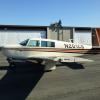Search the Community
Showing results for tags 'fuel gauge accurate'.
-
Checking to see how much interest there is in having an accurate fuel gauge based on cost. I'm asking mostly for J models and older but it also applies to newer models (just less costly). It is also related to my other post about the shape of the fuel float arm. If you could have a fuel gauge that was accurate to within about 0.2 gallons in smooth air or stationary on level ground, would you be willing to spend $2000 to $3500 to get it? Here's the breakdown: 1. If you already have a JPI 930 you do not need to buy a new indicator. 2. If you don't, you need to buy an Aerospace Logic indicator for about $650. 3. If you have a K model or newer, you need to buy 4 floats from Cies for $395 each, total of $1580. 4. If you fly a J model or older that has the angled float arm discussed in another thread (like mine) you need: a. Two floats at $395 each. Total of $790 plus... b. Two floats with the bent arm. The cost of those will depend on how many others are interested. If we can find 50 owners to commit to buying them (total of 100 floats), they will cost about $455 each. If not, and we order just a few, they will cost closer to $675 each. That makes a variable cost of $910 to $1350. Add the $790 for the other two and we are up to $1700 - $2140 for the floats. 5. Total cost for parts would then be $1580 (K+ and already installed JPI930) to $2790 (pre K and need to buy a Aerospace Logic gauge). 6. Plus install cost of $?. Maybe 3 to 10 hours? For the Aerospace Logic indicators it involves installing the gauge and disconnecting (bypassing) the current gauges and fuel low warning lights. In any case you have to install the 4 floats which I don't think would be too much (gaskets are supposed to be included). How many pre-K people are interested? Since our planes sit nose high on the ground, gauge indications are different on the ground than they are in level flight. You want them to be accurate in level flight. Once installed you have to put the plane into level flight attitude and calibrate each wing, one at a time, two gallons at a time. My plan would be to end up with the second wing full and the first wing empty. I would then put the plane back on its wheels on level ground (in the hangar). I would then add unusable fuel to the empty wing. I'd record what the gauge readings were for a full tank and an empty tank. I'd then move one gallon from the full tank to the empty tank and record readings for 31 gallons and 1 gallon remaining. I'd do it again and record readings for 30 gallons and 2 gallons. I'd continue until both wings had 16 gallons. Assuming they both read the same I would be done transferring fuel. I would than have a converstion chart showing me actual fuel remaining based on gauge reading while on the ground.

